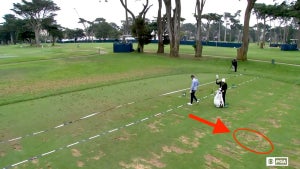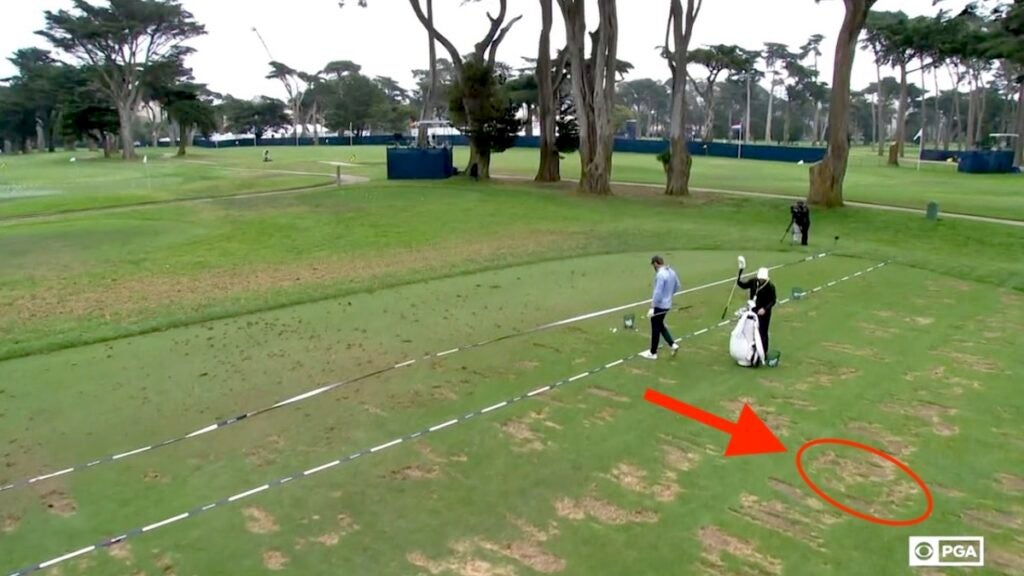The PGA Championship was a wonderful tournament, the leaderboard packed to the brim with top talent and brilliant excitement. And after a few days of reveling in the glory of it all, I can go back and quibble with one small item I noticed during Sunday’s final round.
This divot pattern, which is scattered and gross.

As you can see, most of the divot patterns on the Harding Park range were fine, and the good news is that the range wasn’t actually a range at all: As Golf Digest’s Daniel Rapaport reports, it’s a par-3 course that was converted for the tournament. But, nevertheless, it presents a handy learning opportunity to remind golfers everywhere the proper way to take divots.
As the USGA notes, there are basically three ways to take divots when you’re on the driving range:
1. The Scatter (don’t do this!)
This is the absolute worst way to take divots, and if you do this, you’ve just created a headache for the superintendent and are ruining the range for everyone else. Don’t be that person.
The reason why it’s so bad is because of how inefficient it is. Because all your divots are so spread out, you’re taking up a large space of turn with a relatively few amount of shots.
2. The Compact (not great, not terrible)
Look, nobody’s going to dog on you if this is your divot pattern. As you can see, lots of pros do this, and while it’s good, it’s not perfect, because your divots are so bunched together that it’s also taking up quite a wide patch of turf.
3. Lines (do this)
This, as the USGA notes, is the best way to take divots on the range. Because you’ve organized them into long lines, the same number of golf balls take up very small amounts of turf, which makes it easier to maintain and creates lots of nice turf for other range-goers.

